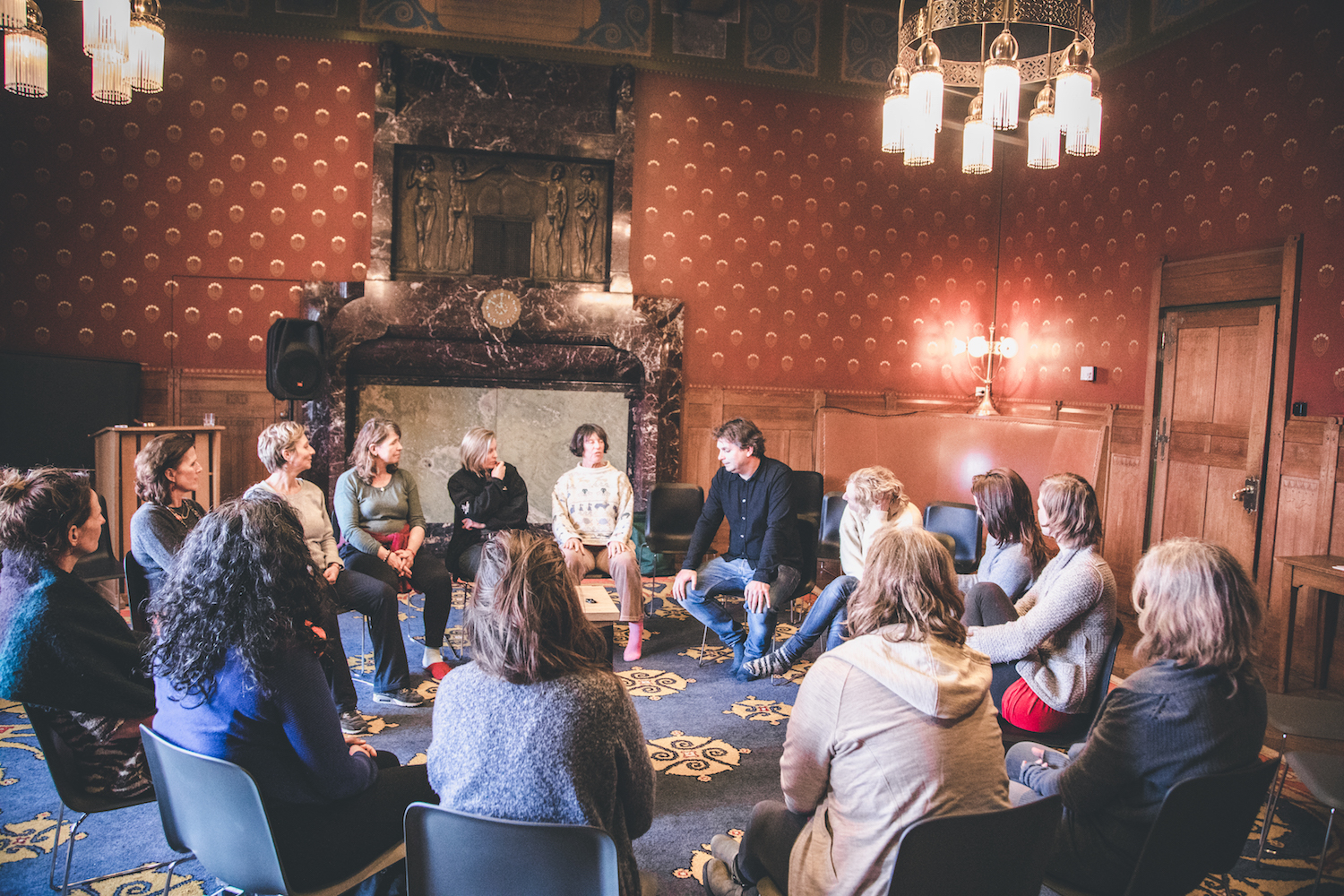Meet Berlage's masterpiece: behind this brilliant show-stopper of a room is an even more brilliant story.
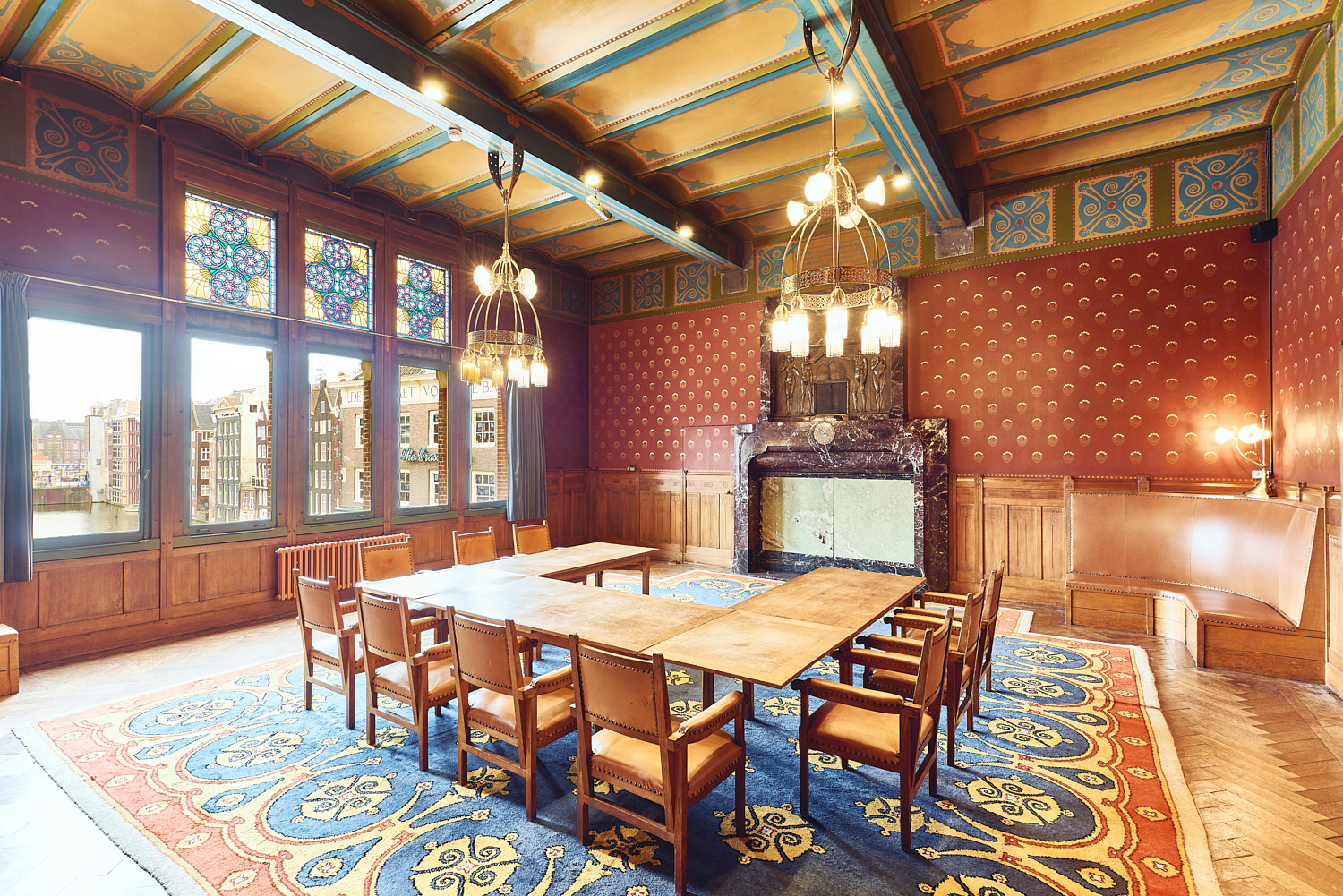
The Board Room was once the meeting room of the "Vereniging voor de Effectenhandel" (Security Trade Association), the trade union of the building’s stock brokers — and it’s just as rich in symbolism as it is beauty.
Today, the room is filled with stunning details of the era: for starters, the “VVDE” logo is still seen throughout the walls and chairs. But one of the most striking remnants are the four bronze figures above the marble mantlepiece by Dutch sculptor Joseph Mendes da Costa, representing money trade (from left to right: Truth, Trade, Wealth and Virtue). You’ll notice that Trade and Wealth are reaching out to each other above large, full money bags (the idea? that trade and wealth go hand in hand); Truth is next to Trade (as trust is necessary for the proper trading); and Virtue is next to Wealth (as the rich must show integrity). 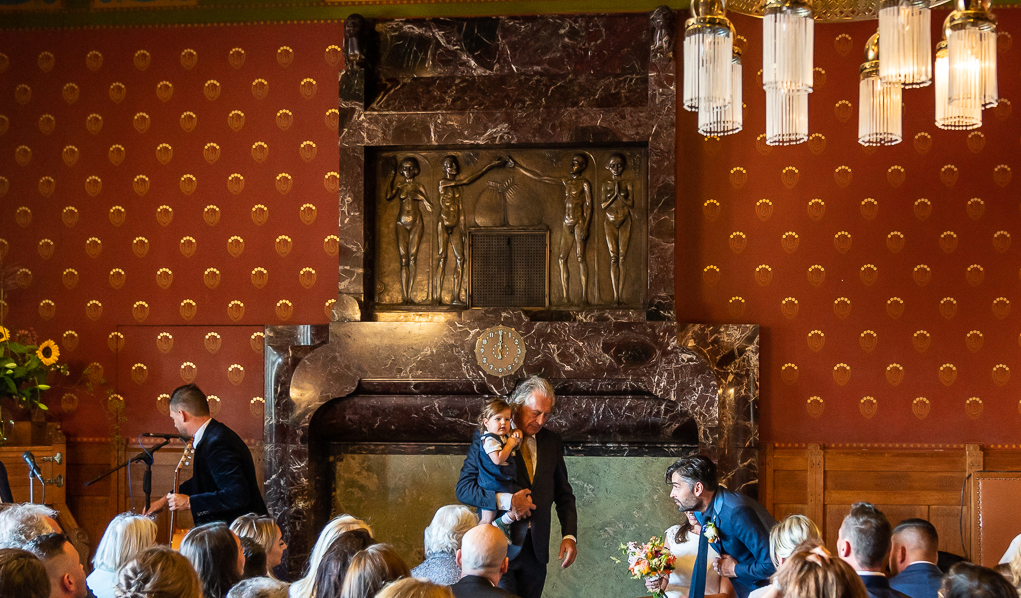
Conversely, across the room is a bookcase with figurines depicting the dangers of trading money: men holding playing cards symbolize the risky gamble of trade, and two figures representing Greed are seen kneeling down scraping coins: a stark warning to all traders of the dangers of greed. 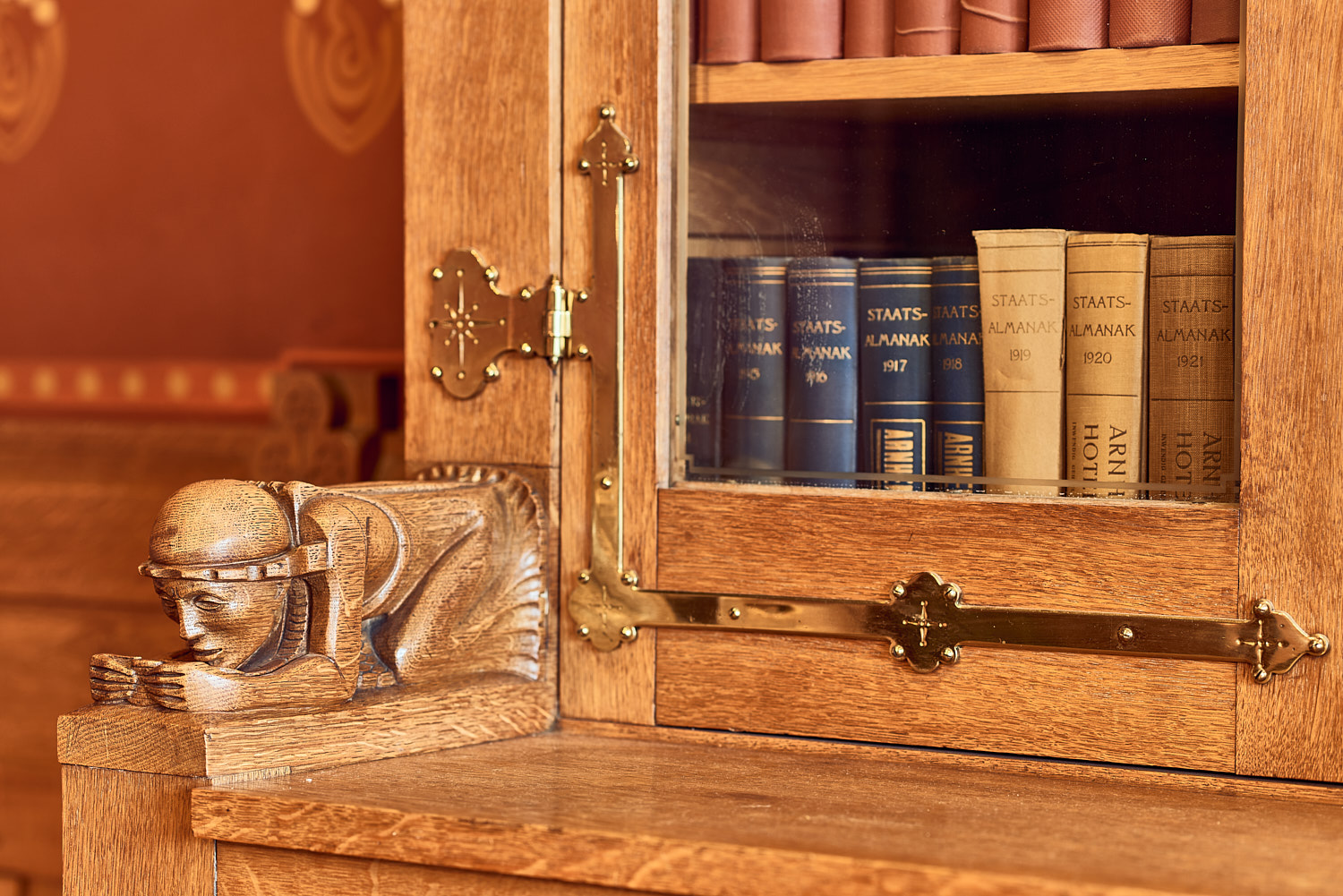
In addition to themes of trust and virtue are strong tones of socialism: at the top of two adjacent walls, renowned Dutch poet and avid socialist (like Berlage himself) Albert Verweij left two quatrain poems about the perils of blind capitalism. Based on these poems, various decorations and furniture pieces in the room show relics from other socialist artists — creating a merging architectural concept popularly known at the time as gemeenschapskunst, or “community art.” 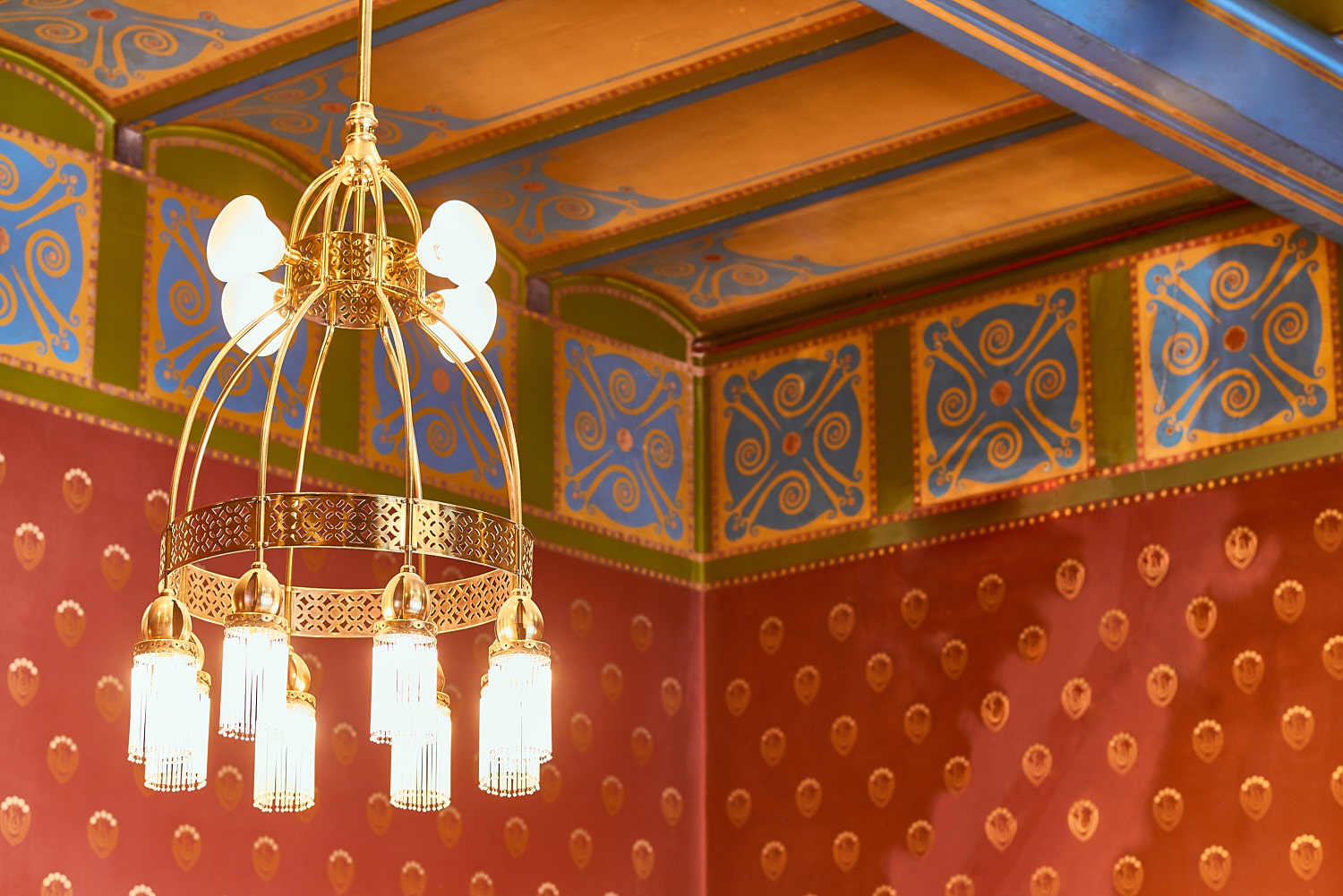
This monumental space represents a special counterpart statement that reflects the spirit of the times: capitalism versus socialism. While it may seem surprising that a fiery socialist like Berlage would design such a capitalistic building for the stock exchange, his small touches, underlying themes and striking details make the atmosphere extremely unique, and thus, highly valuable.
Sadly, the traders themselves didn’t share this appreciation: only ten years later (in 1913), they moved to a new building next door, where the Stock Exchange resides to this day. Afterwards, the space was put to use by the "Raad van de Scheepvaart" (Board of Shipping/Navigation), who used the space to administrate justice and law enforcement at sea.
Berlage would be pleased to see that today, the space is used as a special event space — available for use by all members of society. 